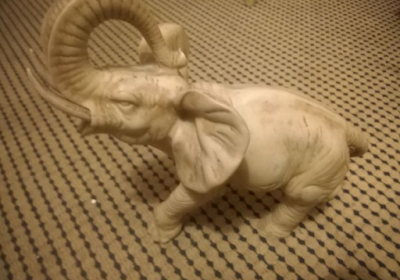History of Thailand’s Ivory Carving
Thailand is one of the Asian countries with endangered elephants after the severe overhunting as a result of illegal ivory trade.
Anthropological studies say that elephants have been living in Thailand for at least 15 million year through carbon dating of the ancient elephant fossils found in Nakhan Sawan Province. However, the only available artifact that indicated the oldest use of ivory was dated back during the Bronze Age. The artifact was a necklace beads found at the site of Ban Chiang in Udon Thani Province dating to 3,600 BC.
Ivory combs dating between 700 BC and 200 AD have also been found in many archaeological sites. One particular item from the Chansen Ancient City was carved in the style of India Amaravati art. An intricately carved ivory bracelet was also found at Iron Age site of Ban Sangdu,
The trading of raw ivory is said to have started during the Ayutthaya period around 14th-18th centuries AD. However, there was a large gap between about 200 AD and the late 19th century reign of King Rama V when no carved ivory is seen in Thailand.
The family of King Rama V was the first users of Thai carved ivory and other royal families thereafter. This is because King Rama V popularized the use of ivory when distribution was very limited. He commanded a contest for carving ivory containers and copyrighted 17 different styles which the family used as personal designs.
In the early 20th century, the aristocracy and upper classes began using ivory-made materials such as combs and utensil handles. Ivory carved items include containers, sword and knife handles, parts for musical instruments in ceremonial orchestras, official seals, jewelry, dolls, chess pieces, and small howdahs. The National Museum has elaborately carved tusks with Buddhas, Buddha figurines, and other worshipping deities showing how ivory was important in religious items.
The demand for ivory grew among monks in the early 1930s. They ordered rosaries, Buddha amulets, singhas or lions and Thai angels called Nanggwak. These Thai angels were believed to bring customers to a business. The demand began when Buddhist monk Boonrod Lohartrakool carved Buddhas at the request of another monk named Luang Paw Derm. When Boonrod left the monkhood, he moved to Phayuha Kiri and taught other people to carve.
A decade after, ivory carved figurines of Rama V, revered monks, and other religious subjects became popular. Through trading, it spread across the country. On the same decade, Bangkok fine arts schools opened up courses for ivory carving to meet the economic demand. All second generation Phayuha Kiri carvers were trained by Boonrod Lohartrakool who died in 1999 and his brother in-law Gong Yangthan.
The development of tourism in 1970s increased the mass production of popular jewelries with elephants, of elephant bridge tusks, lions, dragons, name seals, and cigarette holders. The economic boom in the 1980s led to popularity of Chinese subjects such as Kwan Yin, Laughing Buddha, and Long Life. In the late years of this decade however, Fine arts schools stopped carving ivory because prices of raw ivory became very expensive and too difficult to acquire because of the CITES ban.
